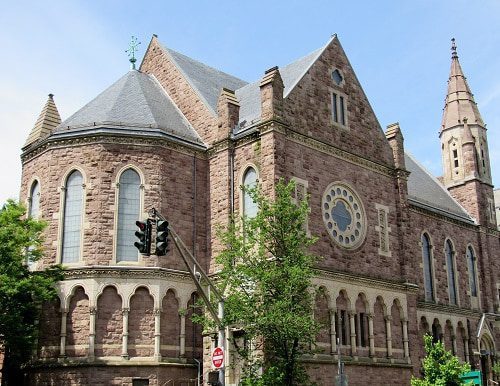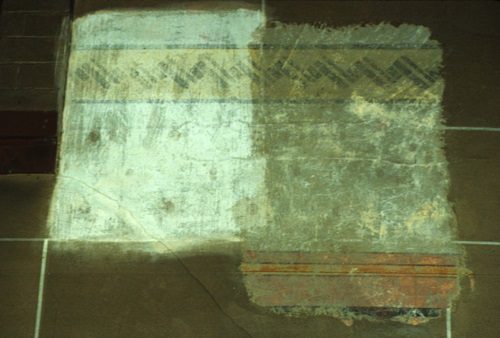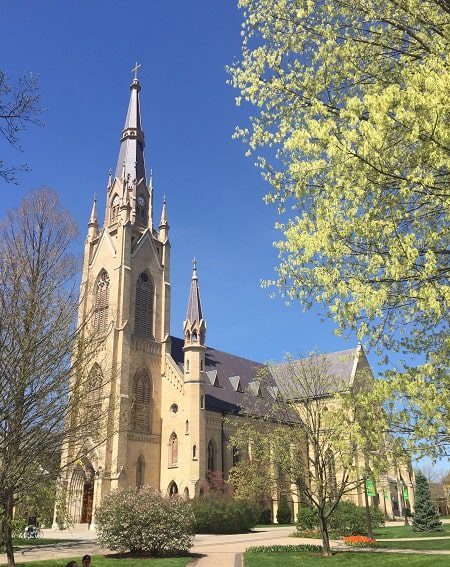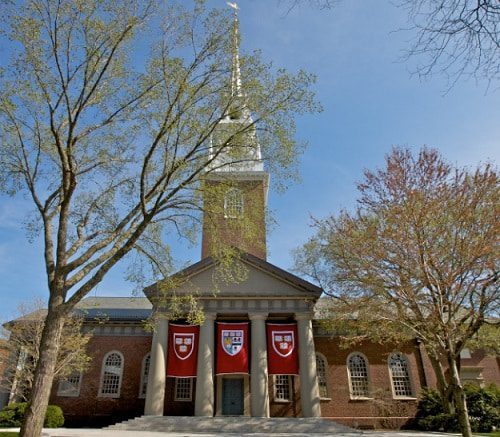Top 3 Historic University Chapels

Universities first emerged towards the end of the Middle Ages. With the dawn of the Enlightenment Period and the emergence of the Renaissance, education became available to more than the royal and rich. During the shift between the Medieval period and the Renaissance, universities became an important landmark in cities and architects flocked to create the most illustrious campus buildings. Centuries later, the United States brought many traditionally styled, prestigious universities into existence. A few of these are part of the Ivy League. Many of these older and more traditional schools were founded with a strong religious influence. Because of this, college chapels were ordained with the upmost reverence. Keeping the faith as a foundation in the curriculum, chapels are necessary to each of the Christian universities. From 1893 to today, there are more than 200 prestigious Christian colleges spread throughout the United States. A few of these chapels lived through many historically significant periods and their stories tell us about the past cultures which surrounded their walls. Luckily, many of these buildings are still actively used today.
Battell Chapel, Yale University


Battell Chapel is the largest chapel at Yale University. Built in 1874, it was a memorial to the Civil War. It is named after American tradesman Joseph Battell who made his fortune in cheese and land. Battell Chapel provided daily services which were mandatory for all university students until early into the 20th century. The church has many intricate details memorializing Yale’s founders and benefactors. The stained glass contains names of donors, presidents, and professors who have been commemorated for their academic service. The architect and designer, Russel Sturgis Jr., pictured a High Victorian Gothic style based on two previous buildings he designed for the university. During its 1970 restoration, Canning combined efforts with a University of Columbia professor to refinish the church. The restoration team found layers of detailing work done through the years on the Church’s walls including inscriptions and signatures of the past artists.


The history of the Battel Chapel becomes apparent with Canning’s restoration process. With every past layer of paint uncovered, we are given a visual history book to the modes of religious art and architecture. Canning’s work proves the importance of maintaining these historical chapels.
Basilica of the Sacred Heart, Notre Dame


The Basilica of the Sacred Heart is a Roman Catholic Church located in the heart of Notre Dame University. Started in 1870, the chapel took almost two decades to complete. The Basilica of the Sacred Heart is the successor to the original chapel which resembled more of a log cabin compared to how we imagine a chapel to look today. This small church became too small for the rapid growth of Notre Dame and the second and present chapel was constructed. Built in a neo-gothic style, the Basilica has 44 stained glass windows illuminating an ornate arched vault going through the nave. The original design was drawn up by the renowned architect Patrick Keely. Unfortunately, the illustrious plan cost twice the amount of the University’s budget and had to be scrapped. This spurred architect Mr. T. Brady to introduce a Gothic Revival design which became the Basilica of the Sacred Heart. Blessed as a minor Basilica by Pope John Paul II, Notre Dame’s chapel has been a beloved feature of the University for over thirty years.
Memorial Church, Harvard


Similar to Notre Dame’s Chapel, Memorial Church is not the first religious institution at Harvard. Proceeded by four other chapels, Memorial Church was constructed in 1932 to honor the Harvard faculty and students who died in World War I. 373 names of deceased Alumni were engraved into the monument recognizing their sacrifice. A side chapel in the Memorial Church pays tribute to Appleton Chapel which was torn down in order to erect the present church. The Finegold Alexander Architectural Firm was greatly influenced by the Richardsonian-Romanesque Style when creating Memorial Church. Key distinctive features include the building’s implied weight and beautiful red brick masonry. The windows and arches in Memorial Church are rounded, similar to the Romanesque revival design. This characteristic combined with the massive pillars at every entrance causes a striking view for any church-goer. Memorial Church remains consistent with the Harvard architectural style due to the red brick and white trim design. Its ornate interior is structured by columns with Corinthian capitals, which have a resemblance to the old Roman government buildings. The design of Memorial Church is greatly influenced by Trinity Church in Boston. Trinity Church is also designed in a Richardsonian-Romanesque style and has been recently renovated and refurbished by Canning.
Each of these University chapels has an immense impact on the system of Education and has provided historical knowledge through modes of design and purpose. There are many other historic religious institutions throughout America that are dedicated to the evangelization of students and scholars alike. A corner stone to each Christian college’s curriculum, these churches help cultivate the students’ hearts and minds by bringing them to the Lord.
